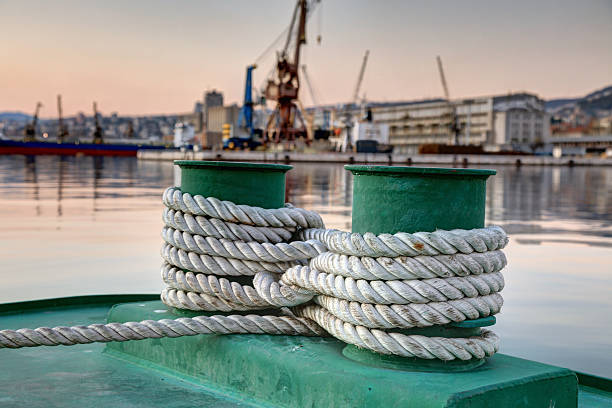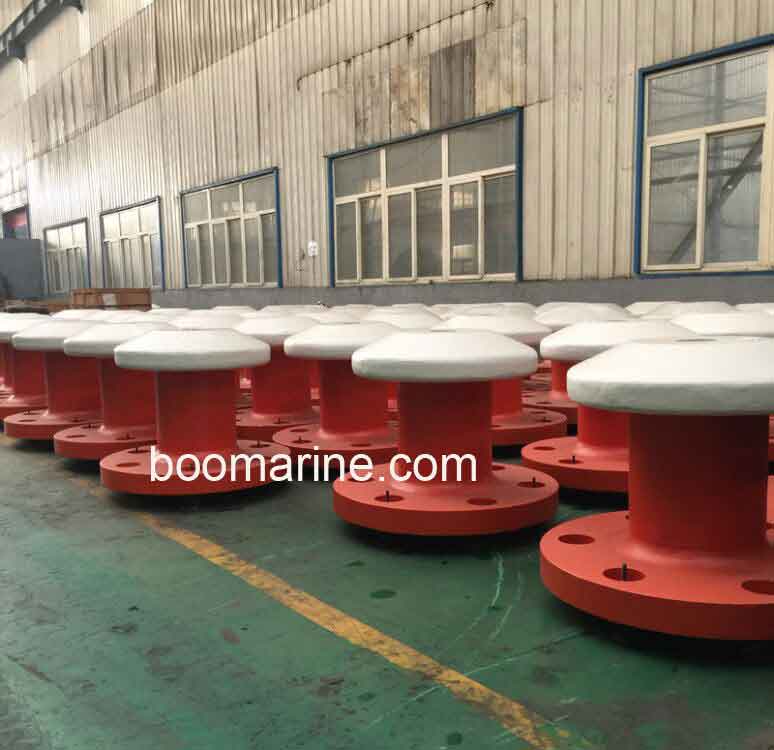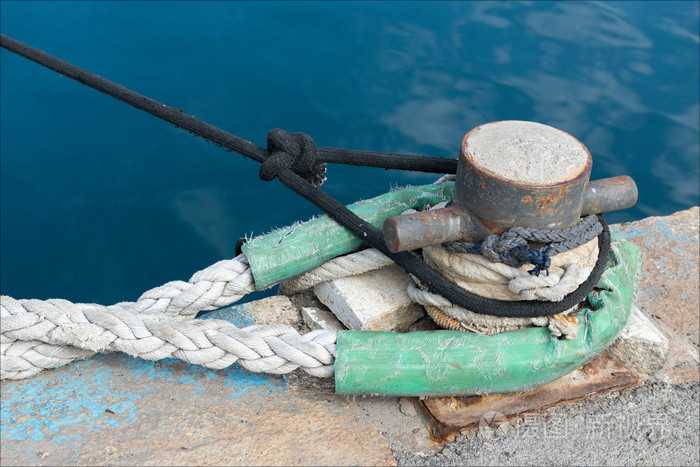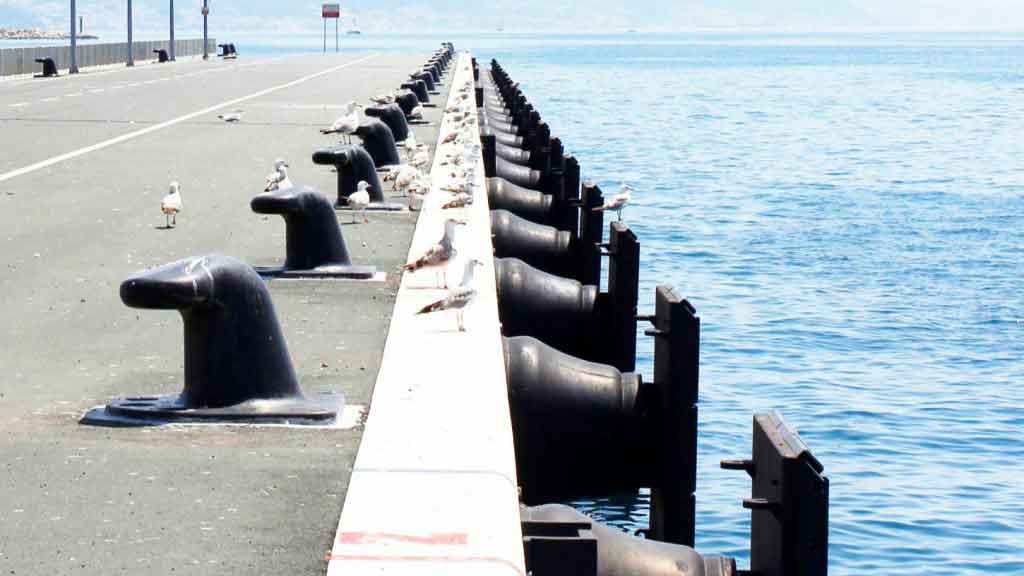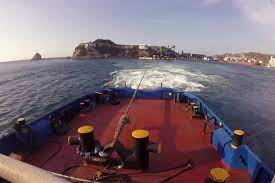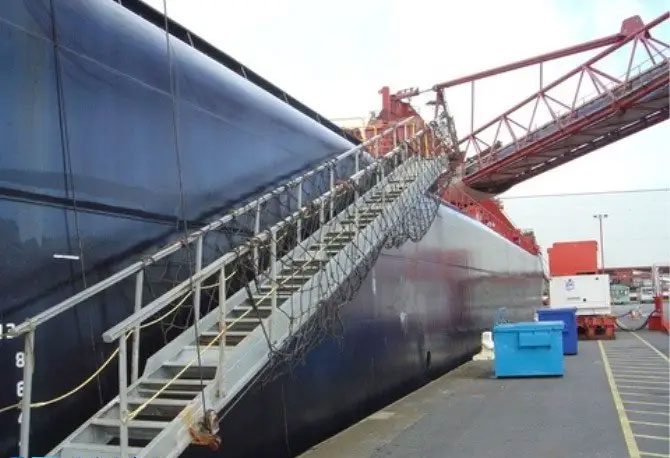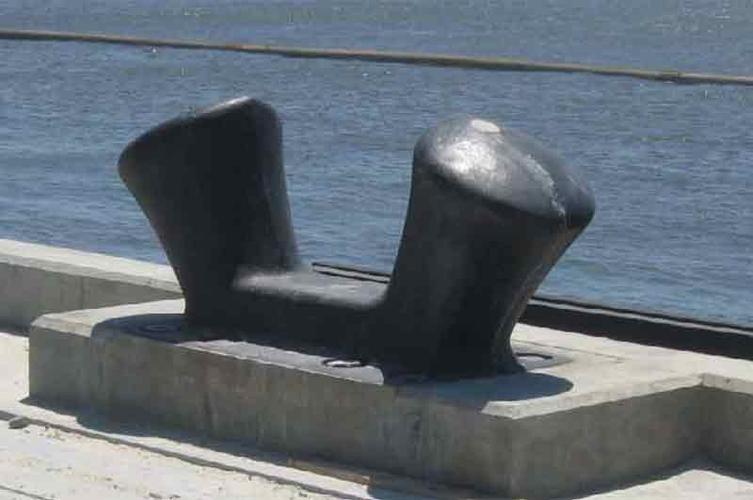Table of Contents
Marine mooring bollards are critical to ensuring the safe and secure mooring of vessels. These seemingly simple structures serve as anchor points, allowing ships and boats to be securely fastened to docks, piers, and other maritime structures. Without them, vessels could drift away, causing accidents or damage to themselves and nearby objects. In essence, marine bollards provide the critical stability and control required for safe and efficient loading, unloading, and general operations in any port or harbor. This article aims to guide readers in understanding the different types of marine bollards, their distinct advantages and drawbacks, and the key factors to consider when selecting the most appropriate bollards for their specific vessel and mooring needs.
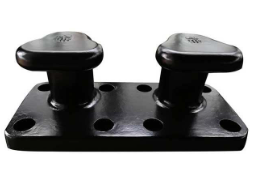
Understanding Marine Bollard Types
There are various types of marine mooring bollards on the market. Just like our company, we can also customize bollards according to customer requirements. The following table mainly shows the most common types of marine bollards on the market.
| Type | Description | Functionality | Design |
| Single bitt bollard | A bollard with a single post. It is also known as a “US-style pillar bollard”. | It is used to secure ships and boats to docks and piers. It can handle multiple berthing lines and is designed to fit into the bolts on the old American-style pillar bollards. | It has a single post that is embedded in concrete. The post is usually made of steel or cast iron. |
| Double bitt bollard | A bollard with two posts. It is also known as a “twin horn” or “twin” bollard. | It is used to secure ships and boats to docks and piers. It can handle multiple mooring lines without affecting the mooring lines of adjacent ships. | It has two posts that are embedded in concrete. The posts are usually made of steel or cast iron. |
| T-head bollard | A bollard with a T-shaped head. It is also known as a “tee bollard”. | It is used to secure ships and boats to docks and piers. It is easy to tie ropes to and can handle heavy loads. | It has a T-shaped head that is embedded in concrete. The head is usually made of steel or cast iron. |
| Kidney bollard | A bollard with a kidney-shaped head. It is also known as a “dolphin bollard”. | It is used to secure ships and boats to docks and piers. It is less likely to damage ropes than other types of bollards. | It has a kidney-shaped head that is embedded in concrete. The head is usually made of steel or cast iron. |
| … |
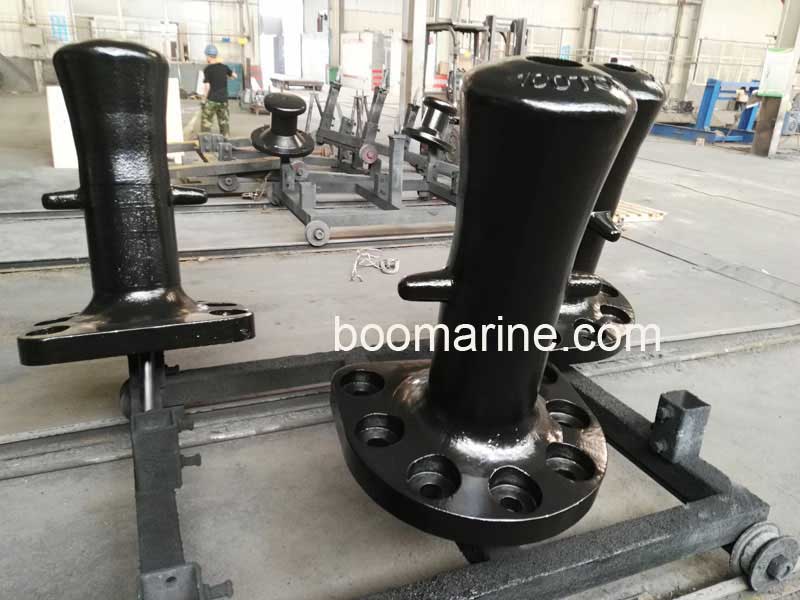
Benefits and Drawbacks of Each Marine Mooring Bollard Type
| Type | Benefits | Drawbacks |
| Single bitt bollard | Easy to install Less expensive Takes up less space Can be used with existing bolt patterns | Lower capacity Not ideal for high-traffic areas Can be more difficult to tie ropes to |
| Double bitt bollard | Higher capacity Ideal for high-traffic areas Easier to tie ropes to Can be used with multiple mooring lines | More expensive Takes up more space More difficult to install |
| T-head bollard | Easy to tie ropes to Strong Can handle heavy loads | Can be more expensive than other types of bollards Can be more difficult to install |
| Kidney bollard | Less likely to damage ropes Strong Durable | Can be more expensive than other types of bollards Can be more difficult to install |
| … |
Factors to Consider When Choosing Marine Mooring Bollard Types
Factor 1:Mooring requirements
- Determining Bollard Capacity: The size and type of vessel a bollard must accommodate has a direct impact on its required capacity, which is the amount of force it can safely withstand. Larger vessels exert more force on the bollard due to their weight, wind, and wave action. Choosing a bollard with insufficient capacity can result in failure and potential damage to the vessel or dock.
- Mooring Line Configuration: The number of mooring lines required varies depending on the scenario. A vessel that requires multiple lines to secure itself at various angles may not be appropriate for a single bitt bollard with only one post. Double bitt bollards provide greater flexibility for securing multiple lines at once, which is critical for certain mooring configurations.
- Handling Steep Mooring Angles: Some mooring situations necessitate securing vessels at steeper angles due to tidal fluctuations or limited space. Single bitt bollards, with their single post design, are frequently better suited to handling such angles than double bitt bollards. This is due to the single post’s ability to provide a smoother line direction change, thereby reducing line wear.
- Overall Mooring Efficiency and Safety: Choosing the appropriate bollard based on the mooring requirements ensures that vessels are secured efficiently and safely. Insufficient bollards can make it difficult to properly secure the vessel, potentially leading to accidents or damage in the event of strong currents, wind, or wave action.
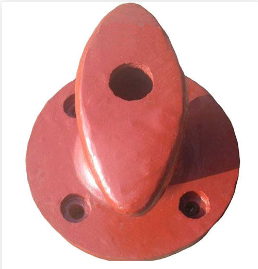
Factor 2:Environmental conditions
- Impact on mooring forces: Environmental factors such as strong winds, currents, and tide fluctuations can significantly increase the forces acting on a moored vessel. These forces can put strain on the bollards, potentially causing failure and damage to the vessel or nearby structures.
- Bollard capacity and material selection: The chosen bollard must be able to withstand the expected forces generated by environmental conditions. Bollards with a higher capacity and appropriate materials, such as high-grade steel or reinforced concrete, are frequently required for harsh environments.
- Corrosion and wear: In harsh marine environments, bollards are subjected to constant salt spray, seawater immersion, and potential chemical spills. This can cause accelerated corrosion and wear, reducing the bollard’s strength and lifespan. Choosing corrosion-resistant materials and performing regular maintenance are critical to ensuring long-term functionality.
- Bollard design and functionality: Certain bollard designs may be more suitable for specific environmental conditions. T-head bollards, for example, provide a wider surface for mooring lines, which can be useful in windy conditions where lines may chafe more easily.
- Safety considerations: Failure to consider environmental conditions when selecting bollards can result in safety hazards. Improperly sized or weakened bollards may be unable to secure vessels during storms or strong currents, potentially resulting in accidents or injuries.
Factor 3:Space limitations
- Physical Size Differences: Different types of bollards have different footprints. Single bitt bollards take up less dock space than double bitt bollards because they have only one post. T-head and kidney bollards take up more space due to their larger head designs.
- Dock and Pier Configuration: The available space on the dock or pier can have a significant impact on the type of bollard used. Single bitt bollards are preferable in tight spaces with limited space because of their smaller footprint.
- Maneuvering and Accessibility: Larger bollards may obstruct movement on narrow docks, making it difficult for vessels to moor and unmoor safely and efficiently. Choosing the appropriate size bollard ensures that crew and equipment can operate without causing congestion or safety hazards.
Conclusion
Single bitt bollards are typically used for smaller vessels, while double bitt bollards are commonly used for larger vessels. Single bitt bollards are also commonly used in areas with limited space because they require less space than double bitt bollards. T-head bollards are an excellent all-around option for most applications. Kidney bollards are an excellent choice for areas with a lot of boat traffic because they are less likely to damage ropes. The best type of bollard for you will be determined by your specific needs and requirements. If you are unsure which type to select, it is always advisable to consult with a professional.

